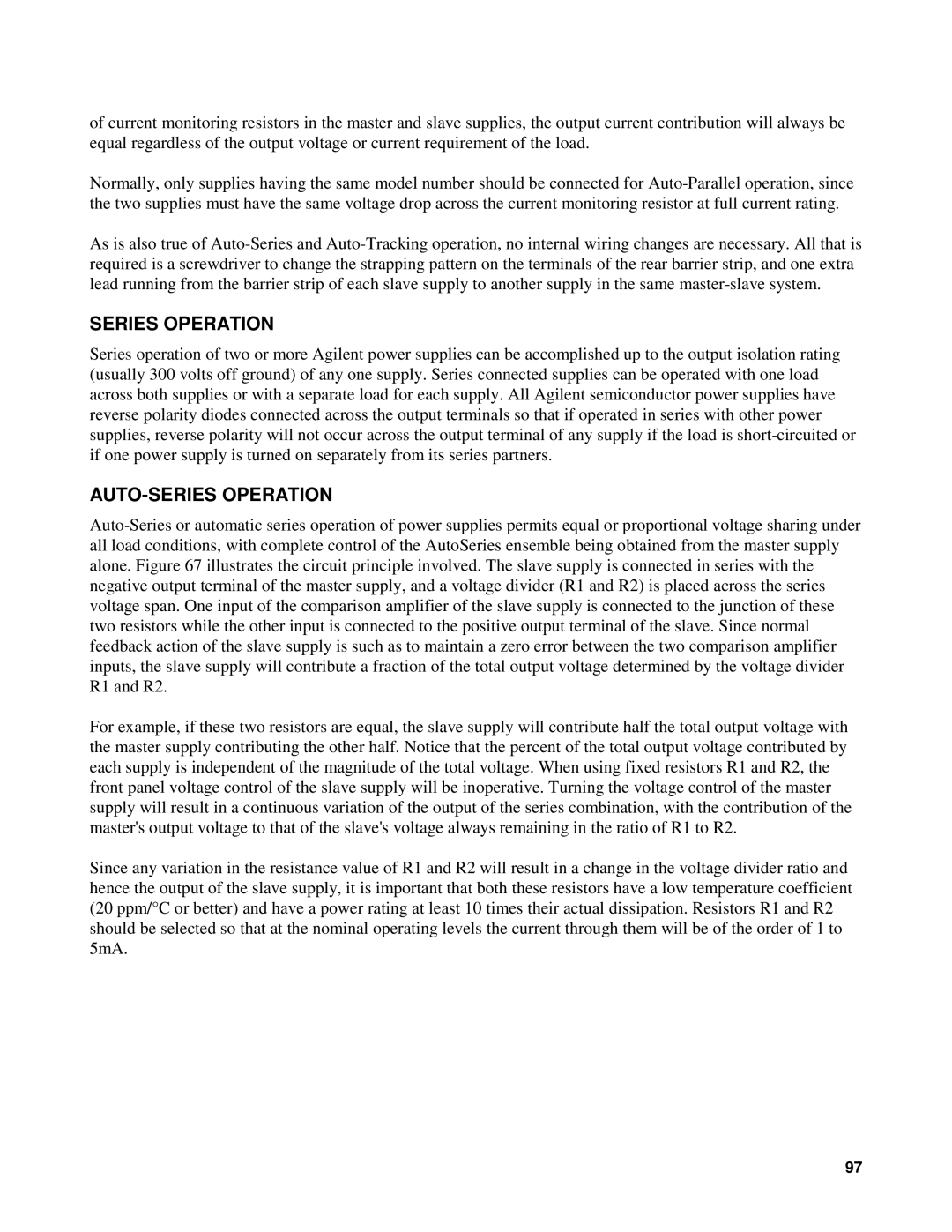of current monitoring resistors in the master and slave supplies, the output current contribution will always be equal regardless of the output voltage or current requirement of the load.
Normally, only supplies having the same model number should be connected for
As is also true of
SERIES OPERATION
Series operation of two or more Agilent power supplies can be accomplished up to the output isolation rating (usually 300 volts off ground) of any one supply. Series connected supplies can be operated with one load across both supplies or with a separate load for each supply. All Agilent semiconductor power supplies have reverse polarity diodes connected across the output terminals so that if operated in series with other power supplies, reverse polarity will not occur across the output terminal of any supply if the load is
AUTO-SERIES OPERATION
For example, if these two resistors are equal, the slave supply will contribute half the total output voltage with the master supply contributing the other half. Notice that the percent of the total output voltage contributed by each supply is independent of the magnitude of the total voltage. When using fixed resistors R1 and R2, the front panel voltage control of the slave supply will be inoperative. Turning the voltage control of the master supply will result in a continuous variation of the output of the series combination, with the contribution of the master's output voltage to that of the slave's voltage always remaining in the ratio of R1 to R2.
Since any variation in the resistance value of R1 and R2 will result in a change in the voltage divider ratio and hence the output of the slave supply, it is important that both these resistors have a low temperature coefficient (20 ppm/°C or better) and have a power rating at least 10 times their actual dissipation. Resistors R1 and R2 should be selected so that at the nominal operating levels the current through them will be of the order of 1 to 5mA.
97
